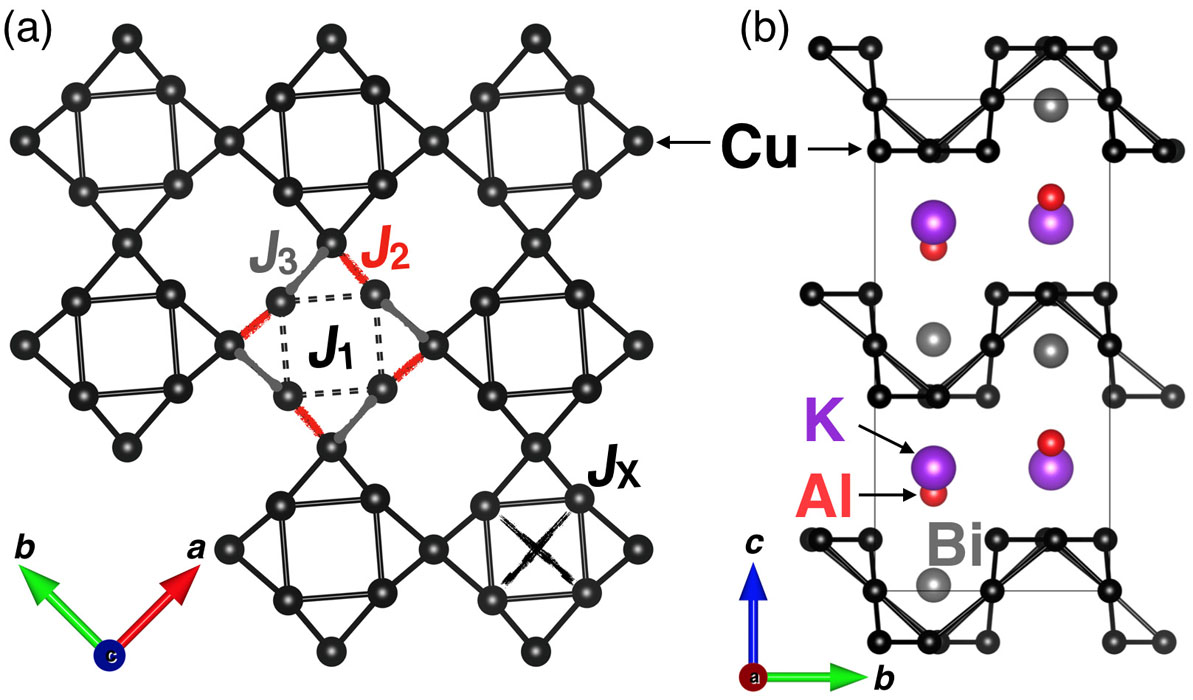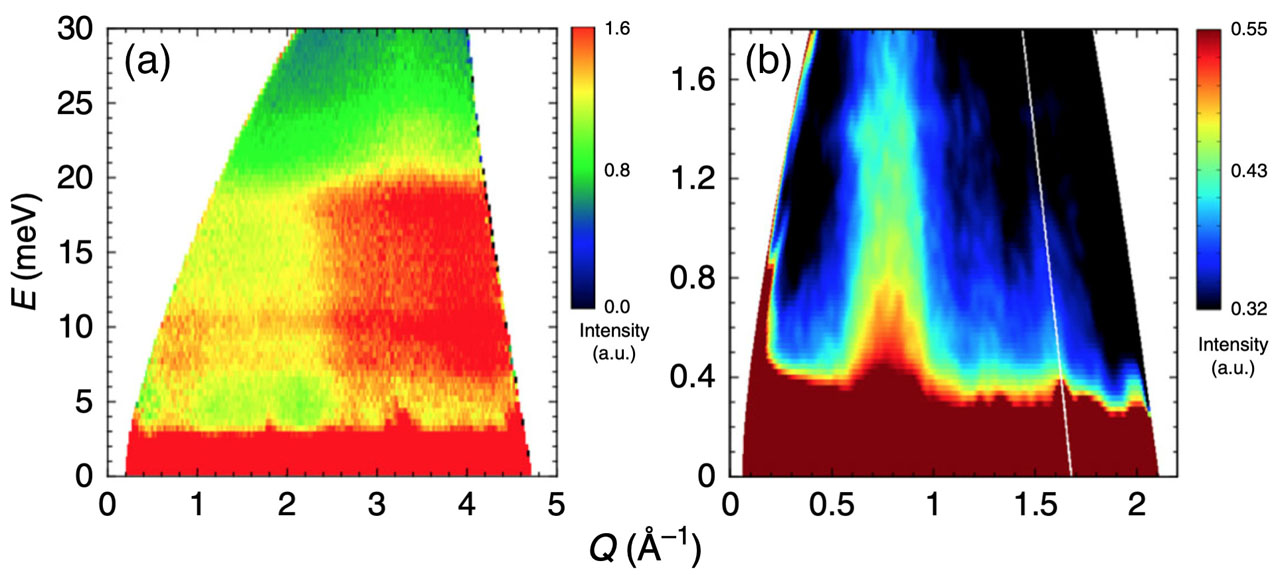Quantum Spin Liquid State in a Square-Kagome Antiferromagnet
M. Fujihala, K. Morita, and T. Masuda
New insight into the spin behavior in an exotic state of matter puts us closer to next-generation spintronic devices. The quantum spin liquid (QSL) state is an exotic state of magnet where the spin of electrons, which generally exhibits order at low temperatures, remains disordered. Observation of a QSL state is one of the most important goals in condensed-matter physics. However, the QSL state in two-dimensional (2D) systems has not been clearly observed in real materials owing to the presence of site-mixing disorder or deviations from ideal models. The lack of a suitable model material exhibiting the QSL hinders observations of the QSL state in the 2D spin-1/2 systems.
Square-kagome lattice (SKL) magnet is known as the highly frustrated 2D system. There is a possibility that the QSL ground states are realized in the antiferromagnetic S = 1/2 Heisenberg model on SKL [1]. However, the lack of a model compound for the SKL system has obstructed a deeper understanding of its spin state. Motivated by the present status on the study of the SKL system, we searched for compounds with the SKL containing Cu2+ spins, and synthesized the first compound of a SKL antiferromagnet, KCu6AlBiO4(SO4)5Cl, successfully [2]. As shown in Fig. 1(a), the SKL in the crystal structure of KCu6AlBiO4(SO4)5Cl comprises the Cu2+ ions. In each SK unit, the square is enclosed by four scalene triangles. From this crystal structure, it is recognized that KCu6AlBiO4(SO4)5Cl has three types of first neighbor interactions, J1, J2 and J3, as shown in Fig. 1(a). By comprehensive experimental studies via magnetic susceptibility, magnetization, heat capacity, and muon spin relaxation, we confirm that the absence of magnetic long-range order down to 58mK, roughly three orders of magnitude lower than the NN interactions.
The quantum statistics of quasiparticle excitations depend on the type of QSL, in particular, the nature of their excitation. To grasp the whole picture of the spin excitation, we performed the inelastic neutron scattering (INS) experiments using the high-resolution chopper spectrometer HRC and cold-neutron disk chopper spectrometer AMATERAS installed in the MLF at J-PARC. As shown in Fig. 2(a), flat signals at around E = 10 and 7 meV are observed at 5 K. The signal due to magnetic excitation is generally enhanced at low-Q values, whereas phonon excitation is dominant at high-Q. The signals at around 10 and 7 meV increase with decreasing with Q, indicating that it comes from magnetic excitation. As shown in Fig. 2(b), streak-like excitation at Q = 0.8, 1.25, and 1.58 Å-1 is clearly visible down to the elastic line, and its intensity increases continuously without signature of energy gap at least within the instrumental resolution. These INS data are consistent with a gapless continuum of spinon excitations. From the above, the flat signals at 10 and 7 meV probably indicate a van Hove singularity of spinon continuum edges at this energy.
Our experimental results strongly suggest the formation of a gapless QSL in KCu6AlBiO4(SO4)5Cl at very low temperature close to the ground state; however, they are inconsistent with the theoretical studies based on the J1-J2-J3 SKL Heisenberg model. We calculate the dynamical spin structure factor S(q, ω) in the SKL model with various values of the parameters, but we could not reproduce the INS experimental results. Therefore, in order to realize the QSL state in the SKL, we must impose an additional condition such as longer-range exchange interactions. Further experimental and theoretical study would reveal the conditions inducing the QSL state in SKL antiferromagnets.
References
- [1] K. Morita et al., J. Phys. Soc. Jpn. 87, 043704 (2018).
- [2] M .Fujihala et al., Nat. Commun. 11, 3429 (2020).


